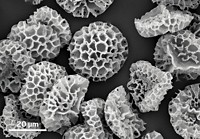Advertisement
Grab your lab coat. Let's get started
Welcome!
Welcome!
Create an account below to get 6 C&EN articles per month, receive newsletters and more - all free.
It seems this is your first time logging in online. Please enter the following information to continue.
As an ACS member you automatically get access to this site. All we need is few more details to create your reading experience.
Not you? Sign in with a different account.
Not you? Sign in with a different account.
ERROR 1
ERROR 1
ERROR 2
ERROR 2
ERROR 2
ERROR 2
ERROR 2
Password and Confirm password must match.
If you have an ACS member number, please enter it here so we can link this account to your membership. (optional)
ERROR 2
ACS values your privacy. By submitting your information, you are gaining access to C&EN and subscribing to our weekly newsletter. We use the information you provide to make your reading experience better, and we will never sell your data to third party members.
Biological Chemistry
The Reason For Silver Nitrate’s Prolonged Microbial Toxicity
Antibacterials: Unaltered poison released from dead bacteria continue killing
by Elizabeth K. Wilson
May 4, 2015
| A version of this story appeared in
Volume 93, Issue 18
In a newly discovered mechanism, after an antimicrobial silver agent kills bacteria, the agent is then capable of moving on to kill still more bacteria (Sci. Rep. 2015, DOI: 10.1038/srep09555). Dubbed the “zombies effect” by David Avnir of Hebrew University of Jerusalem and colleagues, the extended toxicity of silver nitrate stems both from the ability of the silver to form nanoparticles and remain active after it kills and from its subsequent release from the corpses of bacteria. The group first used silver nitrate to kill Pseudomonas aeruginosa. They then separated and cleaned the dead bacteria and added them to a live culture of the same bacteria, killing more than 99.99% of them. Although the authors say it’s too early to make definitive predictions, they see this finding as being useful for wound-healing applications. Though the team studied only one death cycle, “one of our aims is to test how many generations of zombies can be extracted from a single dose,” Avnir says. “In principle, if the silver is not washed away, then many generations are expected.”





Join the conversation
Contact the reporter
Submit a Letter to the Editor for publication
Engage with us on Twitter